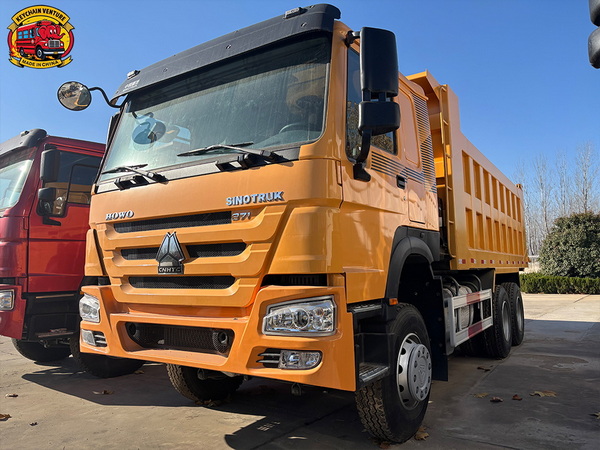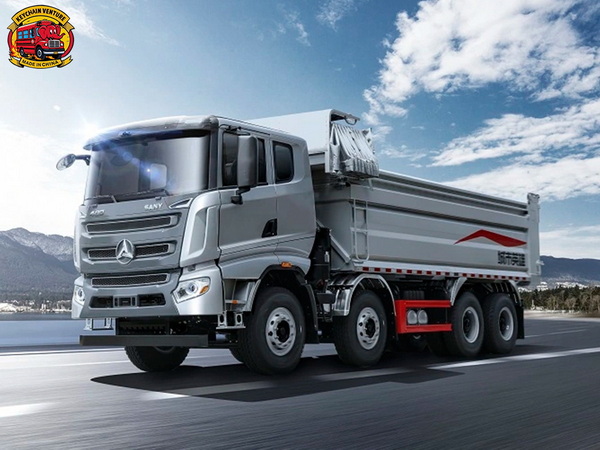Views: 222 Author: Amanda Publish Time: 2025-10-18 Origin: Site








Content Menu
>> Popular Uses of Dump Trucks
● Understanding Cubic Yards and Their Importance
>> Why Measure in Cubic Yards?
● How Many Cubic Yards Are in a Standard Dump Truck?
>> Typical Dump Truck Capacities and Dimensions
● Factors Affecting Dirt Capacity in Dump Trucks
>> 1. Material Type and Density
>> 2. Load Shape and Compaction
>> 3. Dump Truck Bed Dimensions
● Different Types of Dump Trucks and Their Capacities
● How to Calculate Cubic Yards of Dirt Needed for a Project
● Estimating Load Time and Cost
● Safety and Legal Load Considerations
>> Common Safety Factors Include:
● Modern Dump Truck Technologies Enhancing Volume Measurement
● Frequently Asked Questions (FAQs)
>> 1. How many cubic yards can a standard dump truck carry?
>> 2. Does the type of dirt affect how much can be loaded?
>> 3. What are the advantages of using transfer dump trucks?
>> 4. How do I calculate the number of dump truck loads I'll need?
>> 5. What safety regulations apply to dump truck loads?
Understanding the capacity of a dump truck is essential for contractors, landscapers, and anyone working in construction or earthmoving industries. Knowing how many cubic yards of dirt a dump truck can carry helps in planning projects efficiently, estimating costs, and optimizing transport.
This article dives deep into the concept of dump truck capacity, the types of dump trucks, factors affecting their load volume, practical examples, and advanced technologies. It offers a complete guide to help you make informed decisions for your project needs.

A dump truck is a heavy-duty vehicle designed to transport loose material such as sand, gravel, and dirt. These trucks feature an open-box bed hinged at the rear, which lifts to allow the contents to be dumped on the ground behind the truck.
Dump trucks serve a critical role in many industries. Here are some common uses:
- Construction site dirt removal
- Hauling gravel and rocks
- Landscaping material transport
- Roadwork and excavation projects
These versatile vehicles reduce labor and time needed to move large quantities of material efficiently.
Cubic yards measure the volume of material, commonly used to determine how much a vehicle can carry. One cubic yard equals a cube measuring one yard (3 feet) on each side.
Using cubic yards makes volume estimation easier and is an industry standard in construction and landscaping. It allows project managers and operators to match truck sizes to the exact needs of their tasks, avoiding under- or over-estimation.
A visualizing mental image of a cubic yard is helpful when estimating load sizes. Imagine a cube that is three feet long, three feet wide, and three feet high—that is one cubic yard.
Dump trucks vary greatly in size, so their dirt-carrying capacity changes accordingly. They are generally categorized into small, medium, and large loads.
Small dump trucks often measure about 12 feet in length and 7 feet in width, with a bed height near 3 feet. These can carry approximately 1 to 5 cubic yards of dirt.
Medium-sized dump trucks, measuring roughly 14-16 feet in length, often haul 6 to 10 cubic yards.
Large dump trucks, used mostly in commercial projects and heavy construction, can transport 12 to 20 cubic yards, supported by longer and wider beds with higher sides.
Additional features, such as sideboards or extensions, can increase bed capacity by up to 25%.
Several factors impact how much dirt fits into a dump truck:
Different types of soil and dirt have unique densities. For example, dry sandy soil is less dense than wet clay soil. Moist soil weighs more and occupies less volume due to compaction, which affects the number of cubic yards that can be hauled without overloading the vehicle.
Materials that are loose or fluffy take more space but weigh less. Compacted material fits tighter but weighs more. It's important to balance volume with the truck's weight restrictions.
The size of the truck bed—its length, width, and depth—directly influences volume. Some trucks feature hydraulic beds that can tip higher or lower, which impacts how much can be loaded safely.
Additionally, the presence of side extensions increases the volume capacity, allowing loads to be carried more efficiently.

There are several specialized dump truck types to suit diverse worksite needs:
These trucks have hydraulic beds that tip up to unload material. They typically carry between 10 and 14 cubic yards of dirt.
Designed for rough, off-road terrain, these trucks feature a flexible joint connecting the tractor and trailer for improved maneuverability. They carry similar volumes to standard dump trucks.
These combine a semi-trailer with a dump body, greatly increasing load volume—often exceeding 20 cubic yards. They are valuable in long-haul road projects.
Superdumps come with trailers having moving floors and high sides, capable of carrying 25 cubic yards or more. They maximize capacity without overloading axle weight limits.
These dump sideways instead of to the rear, useful when space behind a truck is limited. Their cubic yard capacity ranges around 12 to 18 cubic yards depending on model.
To budget and plan your hauling needs, you first calculate the total volume of dirt you need to move:
Volume(cubicyards)=[Length(ft)×Width(ft)×Depth(ft)]/27
Since 1 cubic yard equals 27 cubic feet, this formula converts measured dimensions into cubic yards.
Suppose you have an area 30 feet long, 20 feet wide, and 6 feet deep of dirt to remove:
(30×20×6)/27=273600≈133.3cubicyards
If your dump truck can carry 10 cubic yards, you will need roughly 14 loads.
Knowing dump truck capacity influences how long a project will take and how much it might cost. More cubic yards per trip means fewer trips and less labor.
Factors influencing cost include:
- Number of loads
- Distance to dumping site
- Labor and fuel expenses
- Permits, if applicable
Many contractors use load management software paired with GPS tracking to plan and monitor dump truck efficiency.
Every region has strict regulations governing dump truck weight limits to protect infrastructure and ensure safety.
- Maximum gross vehicle weight rating (GVWR)
- Axle load limits
- Proper load distribution
- Securing the load to prevent spillover
Exceeding legal limits may lead to fines, equipment damage, and unsafe driving conditions.
Recent advances have improved dump truck operations:
- Onboard Load Sensors: Provide real-time measurements of weight to prevent overloading.
- GPS Tracking: Monitors location and optimizes routes.
- Automated Tipping Systems: Reduce manual effort and increase safety.
- Load Volume Calculators: Integrated sensors gauge volume as material is loaded.
These technologies allow precise matching of project needs and reduce wasted trips.
Knowing exactly how many cubic yards of dirt a dump truck can carry is crucial for successful project planning. Different truck types, dirt density, and bed dimensions all affect capacity. By calculating volume needs accurately, respecting safety regulations, and leveraging modern technologies, you can optimize time, reduce costs, and ensure smooth operations.

A standard dump truck usually carries between 10 and 14 cubic yards of dirt depending on bed size and truck model.
Yes, wet and dense dirt weighs more and may reduce volume due to weight limits, while dry and loose dirt takes up more space but weighs less.
Transfer dump trucks can haul greater volumes, often exceeding 20 cubic yards, making them ideal for large projects requiring fewer trips.
Calculate the total cubic yards of material and divide by the cubic yard capacity of your dump truck to estimate the number of loads.
Legal limits vary by jurisdiction but generally govern total vehicle weight, axle loads, and secure loading practices to protect roads and ensure safe operation.